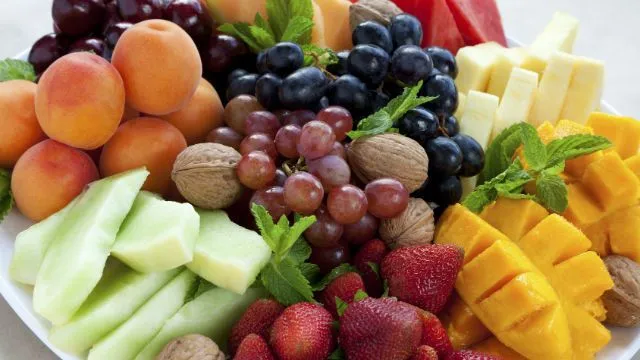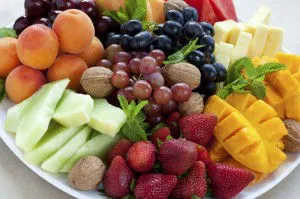
- Share on Facebook65
- Share on Pinterest
- Share on Twitter
Take a look at your plate, is it mostly brown or white with very little color? If so, you are probably consuming far too few vegetables. Nutrient dense, organic vegetables are the best source of energy for the body. They tend to be low in calories and jam packed with vitamins and minerals that promote health and longevity.
Your challenge for today is to start making your plate colorful. Aim for at least half of your plate to be colored with fresh, local and organic vegetables.
According to Mark Sisson, author of The Primal Blueprint, 50 to 100 grams of carbohydrates from healthy sources such as vegetables, fruits and certified raw or organic sources will promote a gradual weight loss of 2 pounds each week. Because they are so low in calories and high in vitamins and minerals, your body will thank you for including them in your diet every day!
Here are a few great vegetables to consider:
Salad Greens: These include all leafy greens you use to make a salad. According to the American Dietetic Association, salad greens are basically “free” foods, meaning you can eat as much as you desire. They have less than 20 calories, plenty of healthy vitamins and fewer than 5 grams of carbs per one-cup serving.
Peppers: Peppers range from mild and sweet to fiery hot and everything in between. All forms of peppers are excellent for weight loss and weight management. Peppers are one of the richest sources of vitamin C, which boosts immune system function and assists in the assimilation of other nutrients. This low calorie food contains only 15 calories per serving (1/2 cup), and 1 gram of fiber.
Sweet Potatoes: Although sweet potatoes are higher sugar than some other vegetables, they are jam-packed with nutrients. A 4-oz potato contains only 80 calories, has 3 grams of fiber and is one of the best sources of potassium. These tasty potatoes also contain vitamin C and vitamin A.
Tomatoes: One cup of cherry tomatoes contains only 25 calories, but has 2 grams of protein and 2 grams of fiber. The biggest health bonus of tomatoes is that they are rich in lycopene, a carotenoid which is highly beneficial for cancer prevention, according to the Linus Pauling Institute.
Portabella Mushrooms: These large and tasty mushrooms are packed with health promoting compounds. Perfect for marinating and tossing on the grill, portabellas contain copper, riboflavin, niacin, copper, phosphorus, thiamin and pantothenic acid. And yes, we include them for their great health benefits, even though they aren’t as colorful as others in this list.
Spinach: Popeye was right when he said to eat your spinach. One of the least sugary vegetables, spinach has only 10 calories per one cup serving, and plenty of fiber. Enjoy spinach as part of salad, or lightly steamed. Some people even put a handful in their smoothies or juices.
Cucumbers: Who can resist the slightly sweet taste of a fresh cucumber? They are one of the oldest known cultivated vegetables, native to India. They are now one of the most commonly grown crops in America.
Cucumbers are extremely low in calories and high in water. They contain numerous vitamins and minerals and also act as a detoxifier, assisting the body in the elimination of dangerous toxins.
 Cabbage: Cabbage is a low calorie, high nutrient blood cleanser that removes free radicals and uric acid, which can lead to arthritic pain, skin diseases and gout.
Cabbage: Cabbage is a low calorie, high nutrient blood cleanser that removes free radicals and uric acid, which can lead to arthritic pain, skin diseases and gout.
Cabbage is excellent roughage, high in vitamin C, and also contains beneficial iodine. Iodine is necessary for proper brain, endocrine and nervous system functioning.
Preparing Vegetables
Pay attention as well to how you prepare your vegetables. Try to eat vegetables in their raw state. The two best options for cooking vegetables are lightly steaming and sauteeing in an organic vegetable or chicken broth.
Both methods are quick and leave vegetables slightly crisp and tasty. Do not overcook your vegetables as they will lose their nutrient value quickly this way. Be sure to save the broth that you cooked your vegetables in and make a fresh soup from it.
-The Alternative Daily
- Share on Facebook65
- Share on Pinterest
- Share on Twitter

